北朝筆記 vol.11 青銅辟邪、龍首櫵斗、鎏金獸面:克里夫蘭博物館的三件南北朝動物雕塑 - Bixie, Dragon and Monster, Northern and Southern Dynasties animal highlights from Cleveland Museum of Art.
- SACA
- Aug 11, 2024
- 4 min read
克里夫蘭博物館藏有三件十分重要的的南北朝時期的青銅精品。南北朝時代是藝術和創造力融合交匯並綻放的時代,從夏商周,春秋戰國以及漢代演變而來的青銅製品在這個時代的呈現也十分值得關注。
辟邪的造型延續了春秋戰國及漢代時期的虎、豹鎮,從博山爐上與天地大山為尺寸為比例的巨大猛獸,到成為南北朝的時代象徵辟邪、天祿的造型,南北朝時代的藝匠們又重新將動物的神性拉回來。
The Cleveland Museum of Art has three very important bronzes from the Northern and Southern Dynasties. The Northern and Southern Dynasties were a time when art and creativity blossomed and the evolution of bronze from the Xia, Shang, Zhou, Warring States, and Han Dynasties is of great importance in the course of Chinese history.
The shape of Chimera is a continuation of the tigers and leopards of the Spring and Autumn and Warring States Periods and the Han Dynasty. From the huge beasts on the Boshan Furnace, which were proportional to the size of the heaven and earth and the great mountains, to the shape of Chimera (Bixie) and Unicorn (Tianlu), which became the symbols of the North and South Dynasties, the craftsmen of the North and South Dynasties brought back the divinity of the animals once more, injecting the sculpture with a sense of spirituality.
一、三足龍首鳳尾樵斗
Tripod Container with Dragon-Head Handle (Zhadou)
這件龍首鳳尾獸足櫵斗應該是櫵斗中的上乘之作。河南省博物院藏有一例類似的作品,但是沒有具象的三獸足;埃斯肯納期(Eskenazi)2023年展出一對鎏金獸足與這件櫵斗類似,但僅存兩足,還有另一足並未展示。
This is one of the finest drinking cups with a dragon's head and a phoenix's tail. There is a similar example in the Henan Provincial Museum, but without the figurative trio of beasts' feet, and a pair of gilt beasts' feet similar to this one were exhibited in Eskenazi 2023, but only two of the feet remain, and the other is not shown.
克里夫蘭博物館藏 六朝 櫵斗
河南省博物院藏 龍首鳳尾櫵斗 (省略三獸足)
Eskenazi 獸足一對
從級別的對比上,Eskenazi的獸足完美勝出,哪怕是缺失了櫵斗的主體本身也可以被認為是藝術品。
Tripod Container with Dragon-Head Handle (Zhadou)
China, Southern and Northern Dynasties period
(386-589)
Overall: 22.8 cm (9 in.); Diameter of mouth with rim: 15.5 cm (6 1/8 in.)
Purchase from the J. H. Wade Fund 1983.214
The tripod is supported by three splayed legs issuing from mouths of lion heads and ending in pawed feet.
This dragon, winged chimera, and grotesque monster's face exhibit uninhibited imagination in the representation of fantastic animals--all are full of energy, vigor, and magical power. Whether as purely sculptural forms or decorative elements of utilitarian vessels, they are characterized by a sensitive modeling of dynamic forms with the typical Chinese elegance of line.
Provenance
December 7, 1983
(Sotheby Parke Bernet, New York, NY, Sale of Fine Chinese Ceramics, Works of Art and Paintings, Wednesday, December 7, 1983, lot 63)
1983–
The Cleveland Museum of Art, Cleveland, OH
Exhibition History
CMA 1990: "Powerful Form and Potent Symbol: The Dragon in Asia," Bull., 77 (October 1990), cat. 11, p. 315, repr. p. 315
Powerful Form and Potent Symbol: The Dragon in Asia. The Cleveland Museum of Art, Cleveland, OH (organizer) (July 24-November 25, 1990).
Images of the Mind. The Cleveland Museum of Art, Cleveland, OH (organizer) (July 7-August 30, 1987).
The Year in Review for 1983. The Cleveland Museum of Art, Cleveland, OH (organizer) (February 22-April 8, 1984).
CMA 1984: "Year in Review 1983," Bull., LXXI (Feb. 1984), no. 269, p. 79, repr. p. 44
二、青銅辟邪
Winged Chimera (Bixie)
China, Southern and Northern Dynasties period (386–589 CE)
Overall: 6.7 x 7 cm (2 5/8 x 2 3/4 in.)
Purchase from the J. H. Wade Fund; Bequests of Leonard C. Hanna Jr. and John L. Severance; Gifts of Francis F. Prentiss and the Worcester R. Warner Collection by exchange 1980.184
Provenance
?–1980
Mr. Eugene [1896–1982] and Mrs. Elva Bernat, consigned to Sotheby Parke-Bernet for sale
1980
(Sotheby Parke Bernet, Inc., New York, NY, sold to the Cleveland Museum of Art)
1980–
The Cleveland Museum of Art, Cleveland, OH
三、獸面
Three rivet holes (one on the forehead and one by each limb) were used to nail the mask onto a door.
This gilt bronze Door Ring Holder is in the form of a monster head with curving horns, protruding eyes, three-clawed paws, curling beard, and flame-shaped hair. The tongue dangles from the mouth, in which the creature originally grasped a ring. While it had a practical function as a door knocker, the intimidating form could also frighten away both intruders and evil spirits.
Provenance
said to be from Sung-Shan in Honan [Henan] Province, China 1
after 1925–by 1930
Jörg Trübner [1903–1930] acquired in China, to his brother-in-law, Edgar Worch
?–1930
Edgar Worch [1880–1972], sold to the Cleveland Museum of Art
1930–
The Cleveland Museum of Art, Cleveland, OH











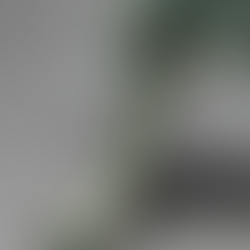











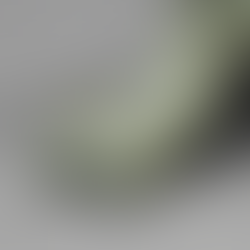


















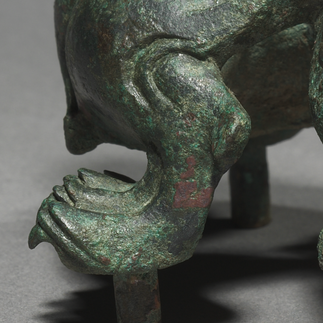








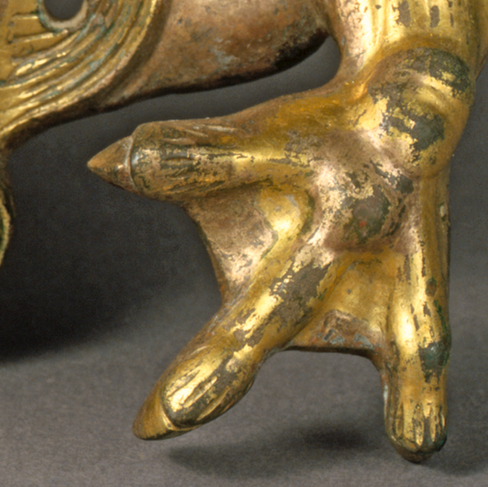





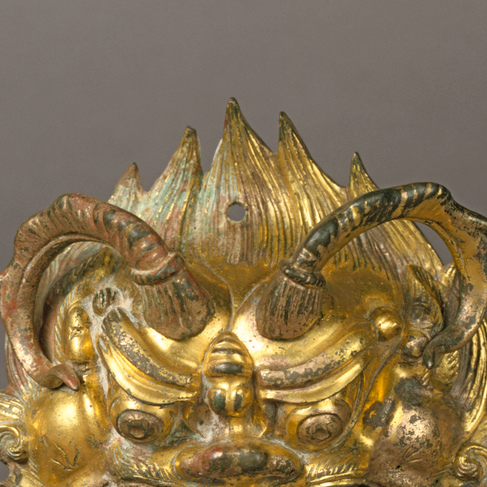







Comments